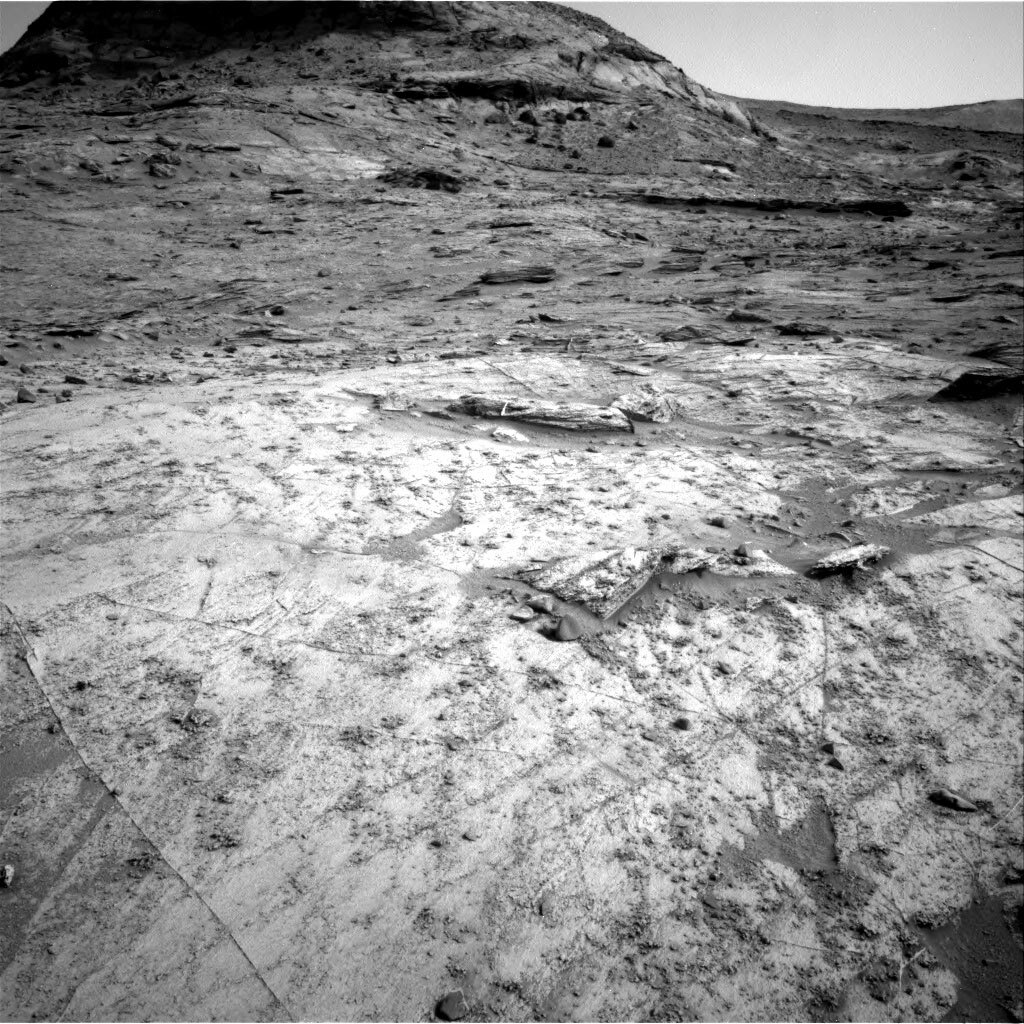3 min read

Another successful drive on Mars resulted in a dusty bedrock workspace with nodules and small raised ridges in front of the rover. Curiosity also has a view towards larger scale, dark, resistant ridges that we have noticed within the more subdued and lighter coloured, more typical bedrock in this area.
The science team decided to investigate the chemistry and texture of one of the small, raised ridges in the workspace (“El Fosso”) with APXS and MAHLI. Is the ridge there because of the presence of a harder, more resistant mineral that might have formed as fluid flowed through the rock? Determining the chemistry of the feature could help to figure out why the ridge is there. To complement this observation, the bedrock target “Kamarkawarai” will be analyzed with ChemCam LIBS and imaged with Mastcam.
Looking further afield, Curiosity will image one of the larger scale, dark, resistant ridges with a ChemCam RMI mosaic. The drive planned tosol should take us closer to one of these ridges, which we hope to investigate in future plans. Mastcam will document an area that may have been the site of recent movement of sand around a block (“The Pit”), as well as an area of a butte that may contain cross bedding (“Maringma”).
Our plan was also full of atmospheric and environmental observations, particularly as we are expecting an increase in dust within the atmosphere as a regional storm passes by. We planned Mastcam basic tau, crater rim extinction and sky survey observations as well as a Navcam line of sight observation and suprahorizon movie.
After the drive, we will acquire a DAN active measurement and a MARDI observation to document the terrain beneath the rover. Standard DAN, REMS and RAD activities round out the plan.
As the APXS payload uplink and downlink lead today, I was responsible for reporting on the downlink from the previous plan and uplinking our observation for this plan. I also helped to pick the El Fosso target. Today was one of those planning days when everything went smoothly. It is not always easy to place the APXS and MAHLI instruments (situated on the end of the robotic arm) on the rocks that we want to investigate. We have to ensure the safety of our instruments and the rover. However, tosol our target of interest was relatively easy to place APXS and MAHLI on.
Written by Lucy Thompson, Planetary Geologist at University of New Brunswick







